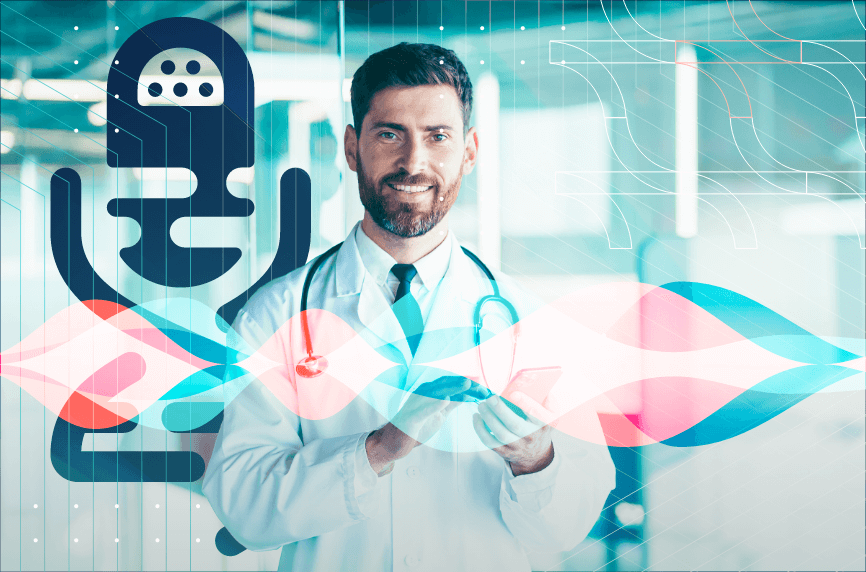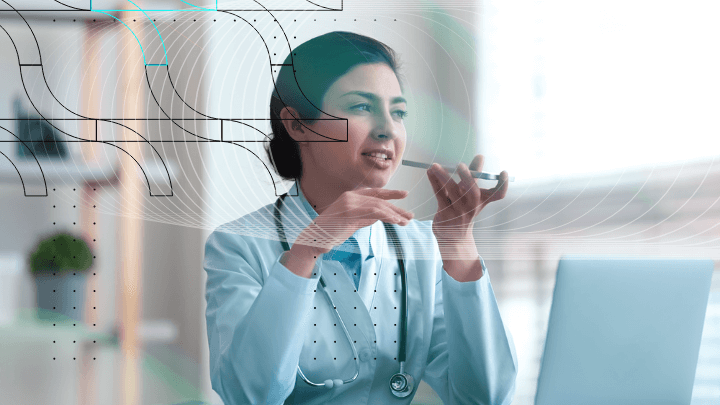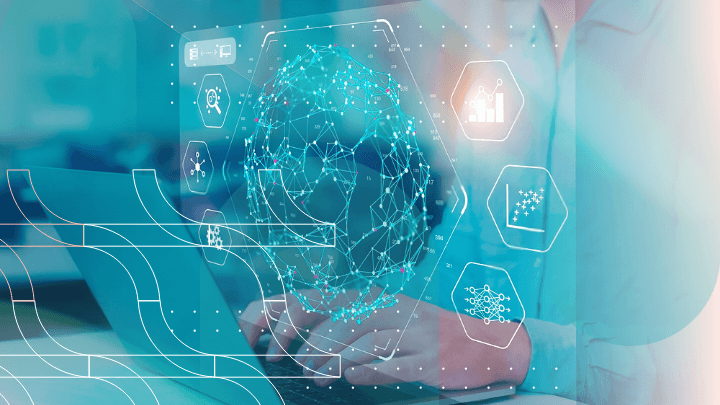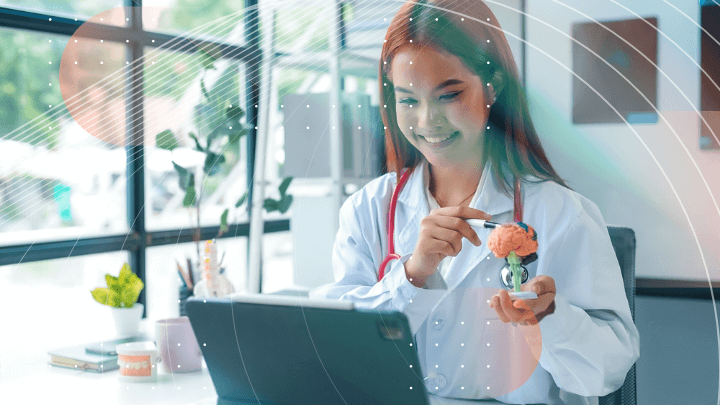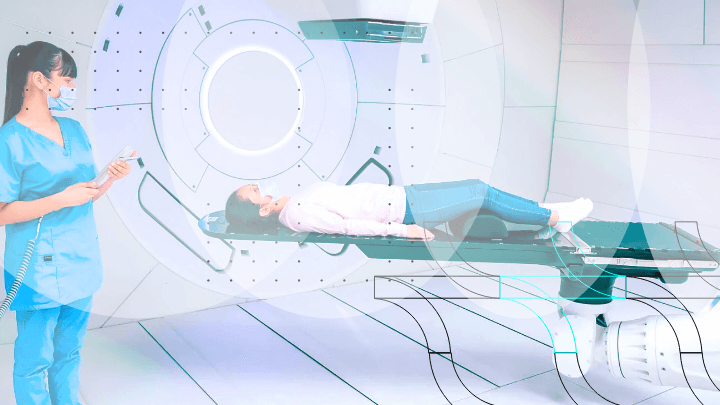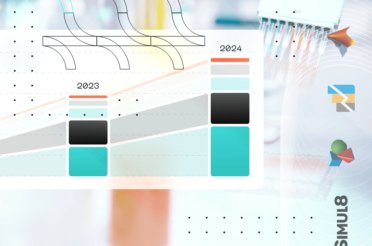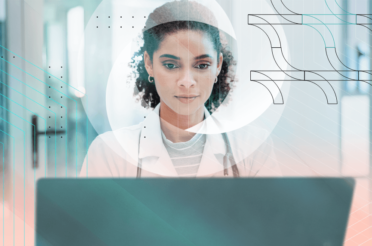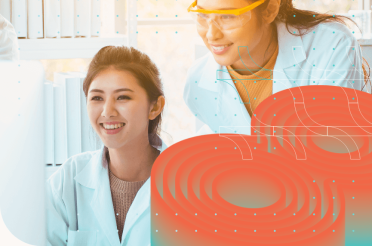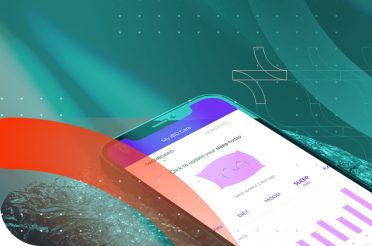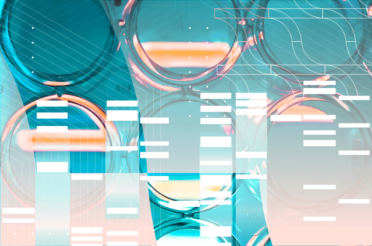Speech recognition technology has existed since the 1950s and has been developed ever since. Whether used as a Google Docs voice typing tool or to utilize voice commands, speech recognition software is found almost everywhere.
Naturally, the software has evolved past its original constraint to include medical voice recognition software as well.
What is medical voice recognition software?
The software is a specialized technology intended for use in the healthcare industry to translate spoken speech into printed text. It is trained to work with the specialized medical terminology and help healthcare professionals to directly dictate clinical documentation, make patient notes and other healthcare-related data into electronic health records (EHRs) and other digital systems.
Traditionally, doctors and other medical professionals document medical notes by hand. This process is time-consuming, prone to human error and especially in large quantities – leading to burnout. Other administrative difficulties are the need to physically transport or scan paper records for remote access or the need to compare different note-keeping styles of physicians.
Instead, if clinical documentation is handled by voice recognition software, a hospital can expect:
- Enhanced efficiency: clinicians can spend less time on manual data entry by enabling medical professionals to transcribe notes directly into EHR systems and focus only on patients;
- Improved accuracy: the software uses contextual knowledge and specific medical language models to ensure accurate documentation;
- Real-Time transcription: medical dictation apps permit quick recording of patient data, enhancing patient care and clinical procedures;
- Reduced administrative burden: solutions in documentation procedures allow medical professionals to concentrate more on patient care;
- Better patient care: The extra free time leads to increased efficiency and accuracy, which improves patient care and safety.
These benefits prompted medical research and investments in the field, as the market is expected to grow from 2.48 Billion to 9.88 Billion from 2023 to 2032 [1]. The main advancement is centered around Natural Language Processing (NLP).
Advancements in natural language processing
NLP has completely changed how speech recognition technology is used in medical settings. Natural language processing fills in the gap between spoken language and machine-readable text by allowing computers to comprehend and analyze human language, which is crucial for precise and effective medical transcription.
These advancements have led to the following solutions.
Specific medical language models
Scientists use large datasets including medical jargon, medical terminologies, and medical vocabulary, to train these algorithms.
NLP algorithms can accurately transcribe complicated medical language by learning from these datasets, which guarantees that important information is appropriately recorded in clinical documentation.
Contextual understanding
Contemporary NLP models are not limited to word recognition; they may also comprehend the context in which phrases are employed. Accurately recognizing homophones and terms with multiple meanings dependent on the surrounding text requires this contextual expertise.
For example, depending on the context, the term “lesion” could refer to a brain lesion or a skin lesion. Contextual awareness in NLP systems allows them to discern between these meanings, which increases transcription accuracy.
Multilingual and cross-domain capabilities
The development of multilingual and cross-domain capabilities in voice recognition software is another result of NLP breakthroughs. The ability of these systems to accommodate various languages and dialects makes them available to healthcare providers across the globe.
Moreover, NLP models can be tailored to various medical specializations, guaranteeing precise identification and interpretation of terminology unique to disciplines such as neurology, cardiology, and oncology.
Competitors that use machine learning are:
- DeepScribe;
- Amazon Transcribe Medical;
- INVOX Medical.
These new possibilities have opened the several uses of voice recognition in the healthcare sector.
Application of speech recognition in telemedicine
With telemedicine, patients may now conveniently obtain medical treatments from a distance, making it an essential component of modern healthcare. Speech recognition technology is being incorporated into telemedicine systems to improve patient outcomes and experience by increasing the effectiveness and efficiency of virtual healthcare consultations.
Real-time transcription of virtual consultations
Real-time transcription of virtual consultations is made possible by speech recognition technology, which enables medical professionals to record patient conversations during telemedicine visits.
This feature makes sure that crucial data is appropriately documented and captured, enabling smooth communication between medical staff and patients.
Voice-activated interactive commands for telehealth systemsThe functionality of telehealth platforms is improved by speech recognition technologies that support interactive voice commands. Voice commands can be used by healthcare professionals to access medical resources, view patient data, and make follow-up appointments.
Language translation and accessibility
In telemedicine, speech recognition technology can help with language translation and accessibility. Voice recognition systems allow medical professionals to interact with patients who speak a variety of languages by converting spoken words into text and transcribing them into other languages.
This feature guarantees that access to healthcare service is not hampered by language barriers and improves patient participation.
Enhanced patient-provider communication
Successful telemedicine consultations depend on patients and healthcare practitioners having effective communication. Speech recognition software improves communication by capturing crucial details and properly transcribing talks.
This guarantees that the themes, treatment plans, and instructions for follow-up are understood by patients and clinicians alike.
Some competitors in the field are:
- Nuance;
- Semvox;
- Sensory.
Yet, healthcare professionals utilize the software in the hospital environment as well.
Discover how we can help outsource Healthcare projects efficiently Speak to an expert today, and see how our on-demand IT talent and augmented teams can efficiently deliver value at every step of your roadmap.

Customization and personalization in medical dictation
Doctors often have huge piles of documents that need to be filled in after each patient visit. Medical dictation software instead records the conversation and automatically fills in the patient record.
A medical dictation solution can have the following features:
- Personalized voice profiles: Healthcare professionals can create customized voice profiles by voice recognition software that adjusts to their own speech patterns, accents, and preferences. These customized profiles take into account each person’s unique speech and language usage patterns to guarantee correct transcription. A medical dictation app can personalize the program for each user, making the system more dependable and intuitive.
- Specialty-specific vocabulary: Healthcare practitioners can incorporate words particular to their specialization into speech recognition software by using customization options. This adjustment makes sure that terms unique to certain medical specialities like cardiology, dermatology, or orthopedics are correctly recognized by the program and precisely transcribed. Voice recognition systems enhance transcription accuracy and relevancy in clinical documentation workflow by integrating words relevant to a particular specialization.
- Contextual adaptation: this is a feature of advanced voice recognition systems that enables transcription to be adjusted according to the context in which terms are spoken. This contextual adaptation makes sure that the program understands language subtleties correctly and offers pertinent transcribing suggestions. Medical speech to text systems provide more accurate and contextually relevant transcriptions by comprehending the spoken language’s context.
Some of the best medical dictation software are:
- Cerner Voice Assist;
- MEDITECH Expanse Virtual Assistant;
- Dragon Medical One.
Finally, another important advancement in medical voice recognition software can be found in assisting surgeries.
Voice-controlled surgical systems
As voice recognition technology becomes more prevalent in operating rooms, surgical systems’ capabilities increase along with the accuracy and efficiency of surgical procedures. These technologies provide hands-free operation and improved control for surgeons during surgery by allowing voice-controlled interactions.
Hands-free control of surgical instruments
Voice-controlled surgical systems eliminate the need for manual manipulation by enabling surgeons to control equipment and devices with spoken orders. Surgeons may perform more precise and efficient surgeries with this hands-free control, which also frees them up to concentrate fully on the process.
Voice-controlled systems help provide a more sterile and regulated surgical environment by eliminating the need for direct physical contact with equipment in the medical practice.
Real-time access to surgical data
During surgeries, voice recognition technology gives surgeons instant access to surgical data and information. Without having to leave the operating room, surgeons can access medical resources, check imaging data, and retrieve patient records with voice commands.
This instant access to vital data facilitates well-informed decision-making and raises the standard of surgical care as a whole.
Safety and error reduction
Voice-activated surgical technologies improve safety and lower the risk of error in the operating room. These technologies minimize distractions and allow hands-free operation, which lowers the possibility of mistakes brought on by manipulating instruments by hand.
In order to enhance post-operative analysis and patient care, voice recognition technology also makes sure that crucial information is precisely recorded and documented during surgery.
Some voice-controlled surgical systems are produced by:
- Sagentia Innovation;
- Stryker.
However, there are some challenges that need to be addressed when implementing voice recognition software
Some challenges with medical voice recognition software
Every physician and patient can benefit from voice recognition software, but some challenges need to be taken into account:
- Integration with existing systems: It can be difficult to integrate speech recognition software with current electronic health record (EHR) systems, which might cause problems with interoperability or disrupt productivity. Solutions to the problem can be phased implementation of the software will enable adjustments and guarantee staff comfort using it in conjunction with current systems. Or, a hospital can rely on vendors that provide integration support.
- User adoption and training: Even if the software is successfully integrated, doctors could be reluctant to embrace new technology, especially if they think it’s unreliable or hard to use
Solutions can be to introduce comprehensive training of staff and ongoing support for users, so they become comfortable with the technology. Another solution will be to use pilot programs to refine the interface so it is as user-friendly as possible.
- HIPAA compliance: Sensitive patient data handled by voice recognition software must be shielded from unwanted access. Additionally, hospitals need to maintain audit trails of how the data is stored. Failure to do so may result in huge fines.
Thankfully, common security solutions to protect digital data are just as useful. Relying on end-to-end transcription, creating automatic logs and automatic internal audits are just some such measures. Notably, working with vendors specialized in healthcare software often means that they will ensure such measures are in place.
Deliver a world-class Healthcare project–with high-skilled, seamlessly integrated IT talent Learn how from our consultants. We work with clients worldwide.
Conclusion
Investing in voice recognition software should be on the radar of every healthcare facility as it can help everyone – from doctors to customers and even general staff. Especially since there isn’t a constraint regarding implementation costs. [2]
Consequently, the only hurdles will be the challenges connected with implementation. In that aspect, working with a trusted partner in the healthcare software industry, such as BGO Software can help any business get ahead of the competition.









